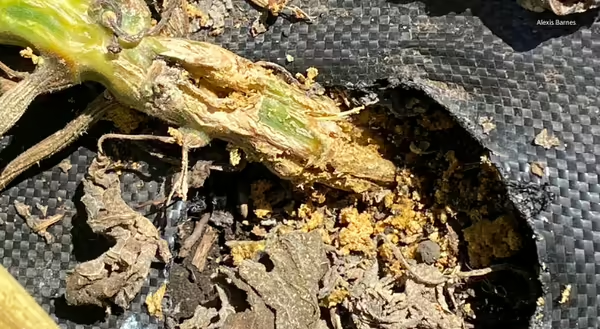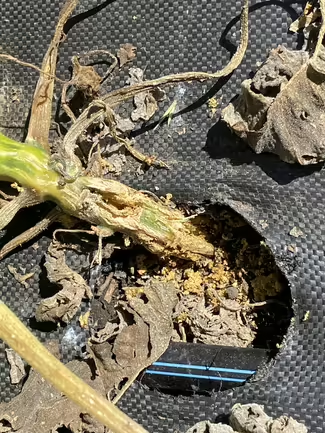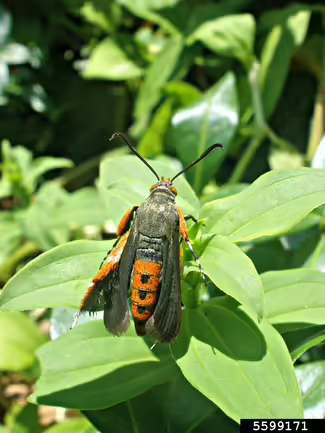
As the growing season continues, squash vine borer has made its way to the tri-county area. Squash vine borer typically emerges in late June and can decimate entire fields of cucurbit crops in a single season. In this article, you will learn how to identify and control this troublesome pest for your garden or small farm and how to prepare for the following season.
Life Cycle
- Squash vine borer adults typically emerge late June to early July from cocoons in the soil
- Squash vine borer moths singly lay eggs at the base of the plant stem after emergence
- After approximately one week, larvae hatch from the eggs and begin boring into plants.
- Larvae block the flow of water to the plant by feeding through the base of the stem
- After larvae feed for four to six weeks, they exit the stem and bore one to two inches into the ground to pupate
- Squash vine borers can remain in the field until the following Summer
Cucurbit Symptoms
Common first symptoms of a vine borer attack are wilting of the leaves on affected plants. If wilting is not checked early enough, affected plants will eventually collapse and die.
When closely inspecting the plant, there may be small holes near the base of the stem. These holes are created by the vine borer when they enter the affected plant and are filled with green flesh and an orange sawdust material called frass. The base of the plant may become mushy or rot away all together.
Squash Vine Borer Management
Once vine borer larvae bore into susceptible plants, it can be difficult to control throughout the season. Listed below are some ways growers can manage squash vine borer.
Cultural Control
- All crops should be rotated regularly, and crop residue should be destroyed if squash vine borer is a yearly concern
- Planting varieties that are less susceptible to squash vine borer such as butternut squash instead of hubbard or acorn squash can aid in crop resistance
- Installing floating row covers before moth flight can prevent adult vine borers from laying eggs. Row covers must be removed when plants start to flower to allow for proper pollination
Chemical Control
- When applying insecticides to control squash vine borer, the goal is to spray before larvae bore into susceptible plants
- During chemical applications in specialty crops, it is important to consider pollinators during the time of flowering. If spray applications are needed during cucurbit flowering, spray later in the day (late evening) when pollinators are less active and flowers have closed on some crops. This allows for insecticides to dry on foliage before pollinators re-enter the area.
Please refer to the Midwest Vegetable Production Guide for Current Product Recommendations.
Caution: Mention of chemical use or use of a pesticide label is for educational purposes only. Always read and follow label and safety instructions, the label is the law.
Thinking Ahead to Next Season
Although squash vine borer is a difficult pest to control, steps can be taken to monitor the infestation to prevent concerns in future growing seasons. Crop rotations and monitoring cucurbit symptoms early in the season are great ways to manage squash vine borer. Additionally, installing pheromone traps throughout the field can attract male squash vine borers, which gives growers insight to the level of the infestation.
For more information on this topic, visit extension.illinois.edu/insects and check out the University of Illinois Extension’s University of Illinois Extension Horticulture YouTube Channel.
Photographs (left to right)
- Squash damage and frass lining the base of the stem from a squash vine borer larvae. Courtesy: Alexis Barnes, South Dakota State University
- Black and orange squash vine borer moths can be very difficult to identify during daylight. Courtesy: Ansel Oommen
- Squash vine borer larvae boring in an affected plant stem. Courtesy: Gerald Holmes


